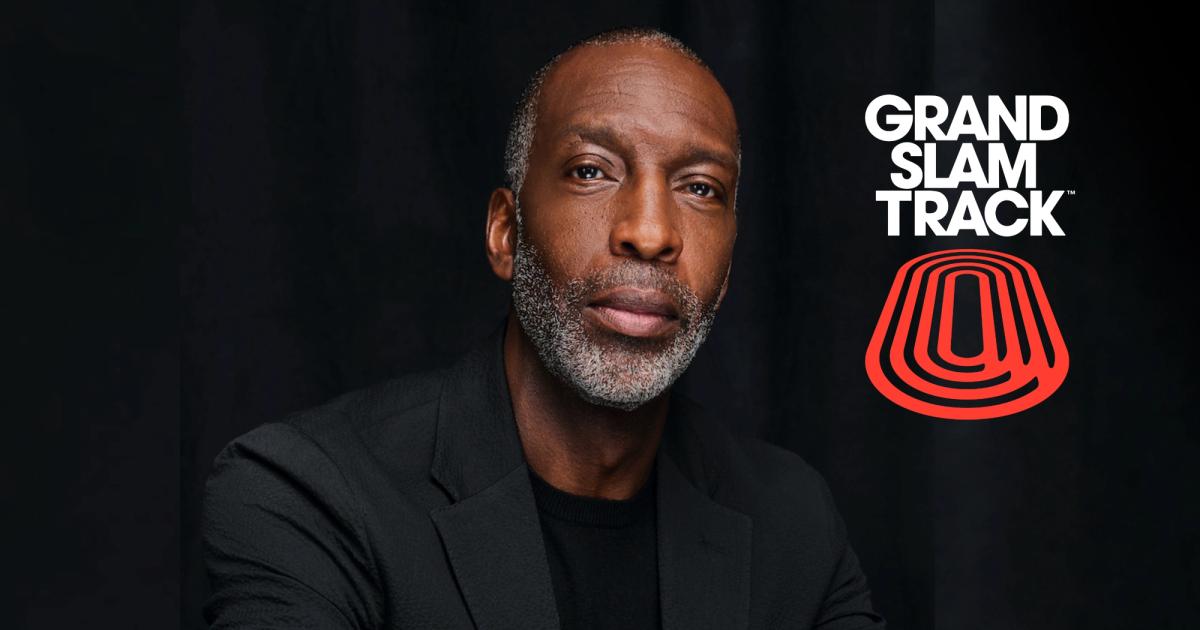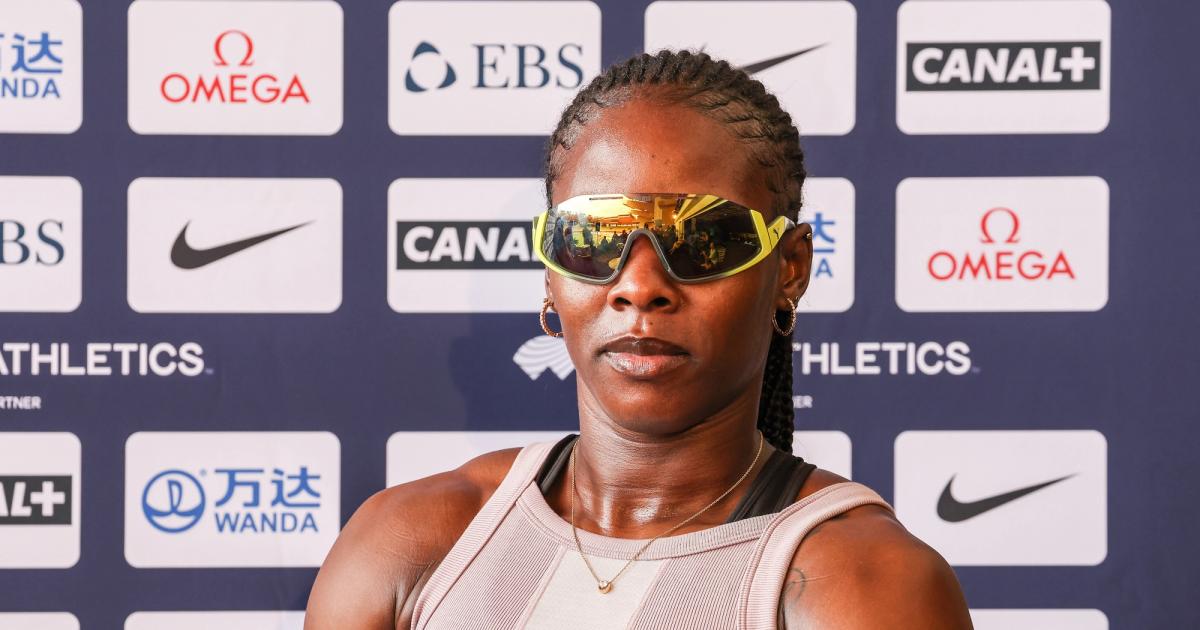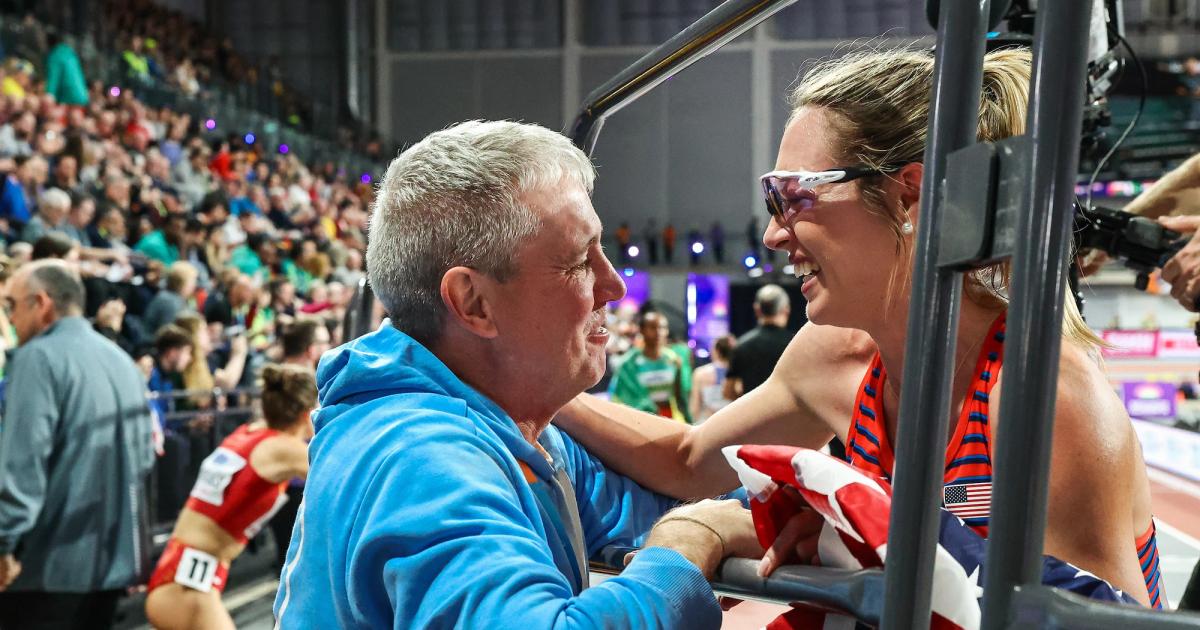June 18, 2024
Listen
"Fans are frustrated that they're hearing these stories that the athletes, who they love to support, are frustrated that they’re not able to capitalize on their greatness. So with Grand Slam Track, I'm able to bring that to fans and athletes. That brings a smile. It makes me happy."
Michael Johnson is one of the greatest sprinters of all-time with his 12 gold medals. However, he joins me as the new commissioner of Grand Slam Track. Michael is on a mission to revive his beloved sport, track and field, which has long struggled to capture the U.S. public's attention outside of the Olympics. Grand Slam is set to debut in 2025.
This league aims to engage fans with a TV-friendly format, spotlighting the sport's biggest stars, and drawing new audiences through compelling storytelling. I speak for CITIUS MAG in sharing our excitement to be partnering with the league to share in their mission on athlete storytelling and we’ll be helping them with our own resources and expertise to connect them with our super loyal and engaged track and field diehard audience.
With a significant investment exceeding $30 million, Michael is determined to bring the essence of the sport to the forefront, putting athletes center stage like never before.
Grand Slam Track will host four annual Slams in global cities – starting in April 2025. Los Angeles will serve as the league's home, hosting one of these exciting events. The league has already signed its first star racer, 400m hurdles Olympic champion Sydney McLaughlin-Levrone. In my conversation with Michael, we talk about the fan’s frustration around now watching some of the top stars compete more and how this aims to change much of that.
Each year, 48 elite athletes will be named GST Racers, competing across various categories and vying for substantial prize money.
Hear a bit more about Michael's vision for the future of track and field and the challenges he's tackling. We'll delve into how this new league plans to fit in among the existing competitions like the Diamond League and leverage the excitement of the upcoming Paris Olympics and the Netflix series to galvanize support from fans and athletes alike.
The following interview excerpt has been edited lightly for clarity. You can listen to the full interview with Michael Johnson on the CITIUS MAG Podcast – available on Apple Podcasts, Spotify or wherever you get your shows.
CITIUS MAG: Alright, now we welcome on a good friend of the podcast, Michael Johnson, who has a new title – Commissioner of Grand Slam Track. You're all smiles. What I love about this is we saw you in Eugene where you had to keep a tight lip, but now it's time to finally let the public know. What’s got you so excited about this new role?
Michael Johnson: What's exciting is that in this new role, I'm able to bring athletes and fans what they've been asking for and screaming out for. As you know, over the last few years, more head-to-head matchups, fans getting to know these athletes, athletes able to connect better with their fans, athletes being able to realize more value for themselves. Fans are frustrated that they're hearing these stories of the athletes that they love to support and are frustrated that they’re not able to capitalize on their greatness. So with Grand Slam Track, I'm able to bring that to fans and athletes. That brings a smile. It makes me happy.
CITIUS MAG: We had a conversation in our backyard at the CITIUS house in 2022. It's funny, if you go back and listen to that conversation, there's little breadcrumbs of what would be in store eventually for Grand Slam Track. But at the time, Kyle [Merber] and myself threw out this idea as to why you haven't ever stepped into a leadership role within the current structure of track and field. Now that this opportunity came about, what led to this change of heart? You are now in a position to create some change. What happened in the last two years since that backyard interview that led to this being possible?
Michael Johnson: A couple of things. One – when we had that conversation, and a lot of conversations I've had over the years, people have asked me to get involved in the current structure of the sport. Getting in the current structure of the sport is primarily surrounding the federations that are intimately involved in the organization of this sport. That's not a structure that I thrive in. I've been an entrepreneur for the last 24 years since I retired. That's an area that I thrive in, commercialized businesses and ventures. I was able to sell my last company a couple of years ago.
Right after we had that conversation, I sold that company. It's left me with time on my hands to figure out what I'm going to do next. The combination of those things and just what we're seeing right now in the sport of track and field, where it's the greatest collection of personalities I've seen in the 24 years since I left the sport and maybe even before, we're seeing unprecedented investment right now into sport in general – from an investment standpoint and from a media standpoint as well. There's an insatiable appetite for our sport from fans around the world. It's a great time to actually invest into sport. So all of those things came together and made sense for me that this is the opportune time, the perfect time, to actually take the sport to the next level.
CITIUS MAG: This is you speaking directly to track fans. Listeners of this show every single week – this is your target demographic. I want them to leave knowing the who, what, when, where, and how of Grand Slam Track to the extent of what's public. Let's start with how this league operates and how it's different from anything else.
Michael Johnson: It's different from every track and field [event], but very similar to thriving professional sports, where there is an actual league and that's what Grand Slam Track is. We are a league of athletes – 48 athletes, best of the best, best in the world. A very exclusive group of the best, fastest, and most popular athletes in the world who compete four times a year in major premier level “slams” as we call them that are prime-time television that break through, that are high stakes, high prize money – $100,000 for first place all the way through to $10,000 for last place.
But our athletes, again, are part of a league. We signed these 48 athletes to the league. They receive base compensation, just like any athlete who signs with a league in any other professional sport does. They also are eligible for prize money on top of that. The whole format of the league, our competition format, is such that our athletes are grouped – eight athletes a group. Each one of those groups competes across two different race distances over a three-day weekend. Their combined score across those two races determines their winnings and the placers. We'll be able to, from a presentation standpoint, present the sport and our events in a way that is modern that allows us to really bring the fan, not just the avid fan but the casual fan as well, into the sport and understand the sport and be able to be entertained by it.
Having time during our broadcast will allow us to set up the races and bring people in and help them understand the players, understand the athletes and their stories, and understand why they're here and why they have an opportunity to win this, and then letting that race take place and allowing us to actually celebrate that race on the other side. The avid fans are already invested in an athlete and they want that athlete to win. We want the casual fan to have that same feeling. But once that's over, the last thing you want as a fan who's now invested their time is just leave that event and jump over to something else. We will have time to celebrate that, to allow the athlete the opportunity to be front and center, and for people to celebrate their win.
CITIUS MAG: One of the things that came up in our conversation in the backyard though was that there are too many meets and we were all in agreement. But now here we are, four new meets taking place. You're calling them “slams.” How do we get the fans invested? Determining the stakes, why should the fans care? Why should the athletes care to be part of the league?
Michael Johnson: What fans have said they want is exactly what they're going to see about a month from now in Paris at the Olympics. They'll see the best of the best athletes competing against one another. High stakes. Nobody makes any mistake about the fact that everybody wants to win the race. Only one person can, but everybody wants to. That's compelling. You're going to see the thrill of victory, the agony of defeat that defines sport. That's why fans watch sports. You're going to see that.
Last year was a good example. The top three male sprinters only competed against one another one time last year. The top three female sprinters in the world only competed against one another two times last year. The fans out there, they want to see it. What we have in this sport is not a demand problem. It's not that people don't want to see the sport. They do. There are 2.5 billion people around the world who watch track and field and are interested in the sport of track and field. The problem is if we're not providing, we have a supply problem. We're not providing them what they want – and Grand Slam Track is designed to do just that.
CITIUS MAG: Some people may be quick to be like, “Well, the rich are only going to get richer.” The thing is, the track and field “rich” aren't all that rich.
Michael Johnson: The track and field rich certainly aren't as rich as the best athletes in the world in other sports. That's what I'm here to change. I've seen the frustration with the athletes that are the best in the world. Not only are they not compensated in that way because there's no structure to do so, but they're also not recognized as well as they should be for their greatness, whereas their cohorts in other sports are at a much greater scale. I've seen the frustration as well with fans because they're supporting those athletes. They love these athletes. And then they find out that their favorite athletes are financially struggling and they're one of the best in the world. Or, their favorite athlete is doing well, but not as well as this athlete over here in this other sport. More people should know them and they should be doing better. That's what I hope to change.
CITIUS MAG: You mentioned the athletes will compete multiple times – what is the structure of the events?
Michael Johnson: We divided the athletes into groups. We have six male groups, six female groups – short sprints, long sprints, short distance, long distance, short hurdles, and long hurdles. In each one of those groups, we have a male group and a female group and each one of those groups will have eight athletes. They will run two races. The short sprints are the 100m and 200m, the long sprints are the 200m and 400m, the short distances are the 800m and 1500m, the long distances are the 3K and 5K, the short sprints are the 100m or 110m hurdles and 100m flat, and the long hurdles are the 400m hurdles and 400m flat. Each one of those athletes will run both of those races over the weekend. Their combined score determines placing.
CITIUS MAG: It leads to some interesting races. When we throw out names, it’s hypothetical that they sign and join the league. So Grant Holloway – one day he's hurdling, but then the next day you get to see him in the 100m?
Michael Johnson: Exactly. It brings out the different skill sets of the athletes. These are all world-class athletes. They're all the best in the world. Some of them will have one of the events be a stronger event for them. But for the other athletes, the second event is stronger. It's their placing across both that determines whether they win the Grand Slam or not. It provides our fans an opportunity to see these athletes two times over a weekend as opposed to just once. It also adds some different stakes and different strategies for the athletes when they're competing. That just provides a better experience ultimately for the event.
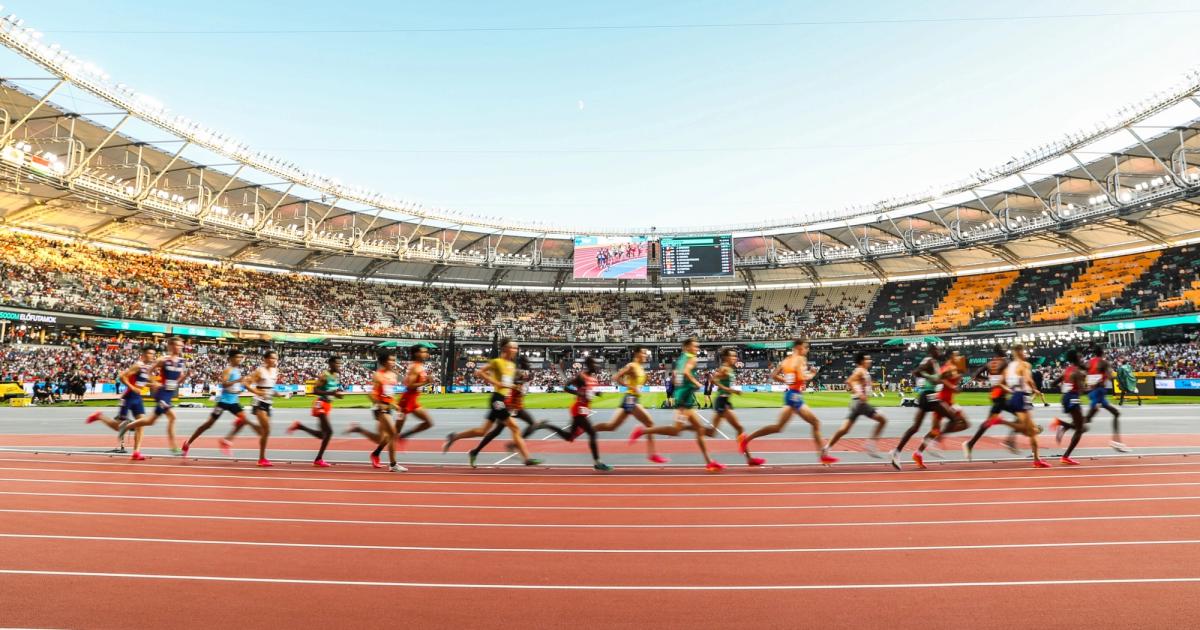
Kevin Morris / @KevMoFoto
CITIUS MAG: When we look online, we see athlete X is pulled out of this race or that race and there were fans who probably bought tickets to go see them. There's been obvious frustrations over time of not being able to see some of the best athletes compete. How do you pitch that buy-in to the athletes? This might be Kyle's job, but to compete in this league where you have to show up to these four events – what if they don't?
Michael Johnson: The athletes need to buy into the concept first – and the athletes are, they understand. Athletes say, “I want to be recognized and compensated for being the best in the world.” Well in order to do that, you have to put yourself out there to entertain a financial source to be compensated. That financial source is fans. The Dallas Mavericks, which is my team, I was a former owner of that team. We sold it, but I still follow that team. They can't just show up when they want to show up and play. They have a schedule that is mandated by the league and they have to show up and play on those days. That's why the athletes are making 10, 15, 20, $30 million a year, because they are an entertainment source to a fan, which is a revenue source.
That's what we have. That's what a real, true professional league provides. The athletes who get that and understand that will certainly buy-in. But at the same time, the athletes themselves have expressed that frustration like, “I want to compete on a grand scale. I want more than just one time every four years to be able to compete in front of a large audience where it means something and is important.
CITIUS MAG: When the first article came out about the league, there was a line in there that said, “Don't view this as a competitor to the Diamond League.” It's an interesting line to tread because it’s sort of new and disruptive. I'm curious if you could elaborate on how you don't see this as a competitor to the Diamond League. I remember Jonathan Gault tried to get you to answer the question, “What are your frustrations with the Diamond League?” I'm not speaking for you here, but I don't view it as a league. It's a series of meets. There's no obligation for these athletes to compete. There's no throughline through each one of them and that is the first thing you need in order to consider anything a league.
Michael Johnson: For us, what has been missing from the landscape of track and field is exactly what we're bringing. That’s head-to-head competition where all of the best athletes compete against one another. You don't see that. Again, last year for the top three men, you saw that only one time and that was in Budapest at the World Championships. You don't see that at the Diamond League. That's what's been missing.
The reason why I don't see ourselves as a competitor to anything else out there is because what we're bringing is very unique. It's its own thing. The whole thing about the number of meets out there, there were 2500 athletes that competed in Budapest at the World Championships last year. That's 2500 basically professional athletes in the sport. You do need a lot of meets to satisfy that sort of number of athletes. I think people don't understand, or fail to understand, how many athletes in this sport are considered professional and elite. You have to have a lot of meets because those people need somewhere to compete, right?
But our athletes are the best of the best. They're their own group – an exclusive group of the most popular, fastest athletes in the world. Nothing exists until now that gives them their own unique and exclusive league for them to compete in where fans know, “If I go here, I'm going to see the best of the best.” If you're a basketball fan, you know if you want to watch the best basketball in the world where all of the best athletes compete, it’s the NBA. It’s the same thing for every other sport. Golf, it's the PGA tour. Football, it's the NFL. You have other leagues, but the best of the best have their own league. We have not had that in track. Now we do.

CITIUS MAG: Thinking ahead a little bit, I'm not going to let you go off without asking, why no field events? I have to ask you because I'm sure there are people wondering, what was the rationale? Speaking to that, when you're throwing out these stats, it sounds like there's more than one. It's not just you making these decisions. There is data and information behind every single decision.
Michael Johnson: Absolutely. We have our [data] partner on this who has done a great job of doing research, focus groups, diving into the actual research and details as opposed to just a gut feeling. We have data to back this up, and we have to given the level of investment that we’ve put into this. Our reasoning for no field events is that one of the things we understand about modern sports, and one of the rules that was absolutely critical in developing this whole product, is one event at a time. We will have one event at a time. We will never stray from that.
The athletes in those different events, in order for them to be on the stage that we want them on, they deserve to have undivided attention on them. And a 2.5 hour window, which is our television window, live broadcast window, live in-person event window for events each day, we can't put field events in there and fit it in if we want to do one thing at a time. That's something that we are adamant about because in this day and time, that's how you build a professional sports league.
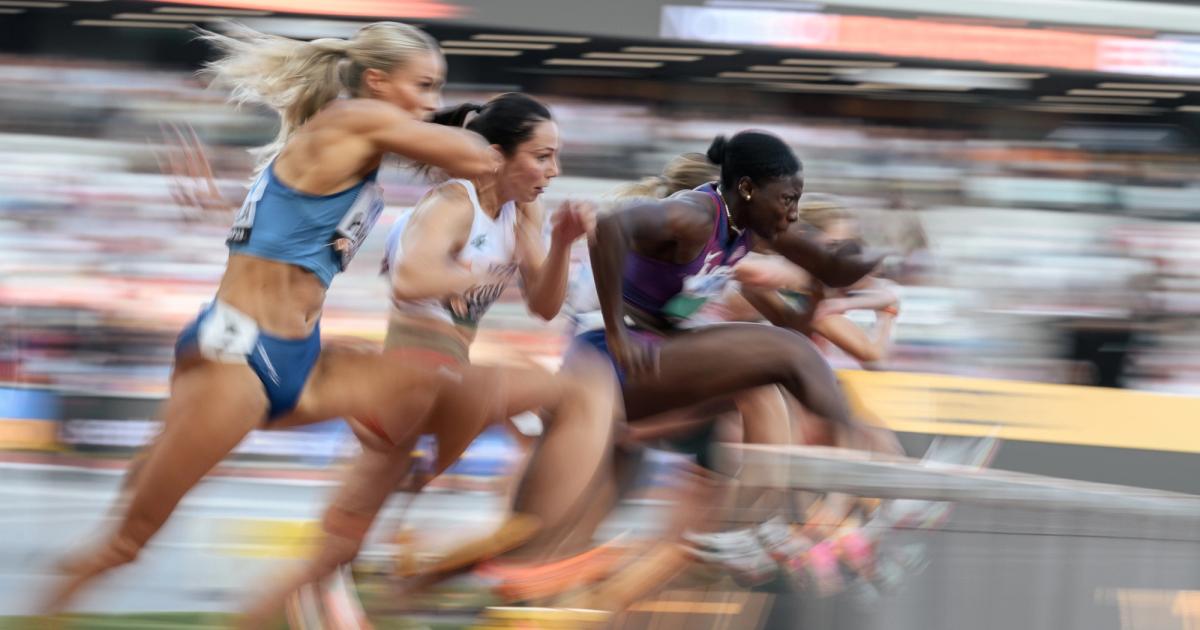
Johnny Zhang / @jzsnapz
CITIUS MAG: As I go through the who, what, when, where, why, this is starting in 2025. Plans are already in the works. Where in the calendar does this fit? I'm sure the specific dates are still being finalized.
Michael Johnson: We will fit in the April to September window of the outdoor season. We will probably skew heavily towards the beginning of that season. Right now, athletes want to be here in the U.S., they don't want to travel as much. There is a void there in that particular part of the schedule to some degree. We will be heavily focused on the U.S. but we will remain a global sport. Our athletes come from all around the globe. We will have meets in other parts of the world. But two of our races will be in the U.S.
We will focus heavily on the U.S. Not to ignore any other parts of the world where we've got a global fan base, but the U.S. is a real opportunity for us. That's something that has been talked about for quite some time now. With Seb Coe and World Athletics, we want to grow the sport, we need to grow the sport in the U.S. That's something that we're focused on to try to help the sport.
CITIUS MAG: The other “where” element – and this is a tough one in track and field – is where to watch it. Again, it's still early with the broadcast deals being finalized. That's a challenge right now. Even with the excitement of the [SPRINT] Netflix series, the follow through is the hard part here. If you watch Drive to Survive, it's easy to find on ESPN. Or golf Full Swing, you watch it on the Golf Channel, NBC, wherever it might be. If we hook track fans, they're going to have a challenge of, “If I'm a Noah Lyles fan now, how am I going to watch him compete during the regular season?” If you can figure out what that exactly is defined as, I see an opportunity here for Grand Slam Track to fill that void and be that follow through.
Michael Johnson: Exactly. You're right. That has been a problem in the past, a huge problem for fans, frustration for fans, but also in growing the sport that it’s very difficult to find and it's very inconsistent. One of the things that has been very validating for me and that I'm extremely excited about is that we've been talking to all of the potential broadcast partners globally and certainly here in the U.S. The level of excitement around what we built with Grand Slam Track, and the level of interest, has been very high. I'm very pleased with that. We're looking for a partner that believes in this and believes that they can really help bring the resources to partner with us on this to really grow that fan base in the first few years.
CITIUS MAG: An exciting element is that after a couple months of conversation, CITIUS will be a partner in helping with the storytelling side of things. How important is that? You’ve been on our shows, you’ve familiarized yourself with how we present the sport and the athletes and showcasing their personalities. Carving out that space for the new era and generation – I think you put it out on Twitter at [the Prefontaine Classic] that these content creators nowadays, they're so creative and we need them.
Michael Johnson: Absolutely. It’s been frustrating for me and I'm sure it's been frustrating for you guys seeing some of the incumbents in the sport and powers in the sport previously being a bit skeptical about welcoming in new storytellers, which runs completely counter to my experience as an entrepreneur. If I've got people who are willing to go out and sell my product for me, and I can create an economy for them as well, there's no better situation when I can provide content to them that allows them to be able to go out and sell my product. Then they can actually monetize the content that they're using. There's just no better situation.
So absolutely, we will certainly embrace influencers. We will certainly embrace that. All forms of media – traditional media, but certainly new media as well and influencers and fans who want to get out there and talk about this sport. Not just our events, not just Grand Slam Track events, but Diamond League events, Olympics, and World Championships too. Our objective is to come into this sport, draw new fans in, provide a new product, and uplift the sport itself.
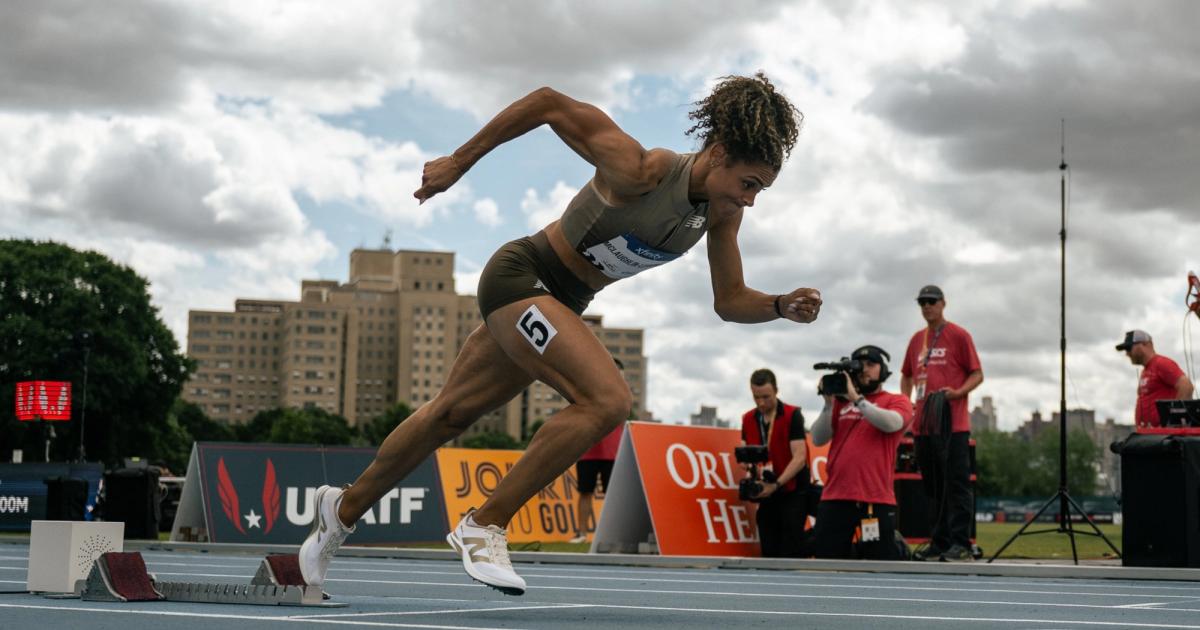
CITIUS MAG: The concern may be that whoever is running the credentials side of things, it's like, what if every athlete asks for a credential for their own media team? It sounds like a nightmare, but it’s actually what we’ve been dreaming of, if every athlete could bring in their videographer. It could get crowded and it might be a lot to juggle, but think about what's going to come out of it. How are you going to measure success in these early years? The challenge is going to be for it to take off. It's going to take a couple of years and maybe longer than you think.
Michael Johnson: This is my fifth or sixth business venture. I've been very fortunate to have had success in the past. None of those were successful right off the box in terms of being profitable or realizing the ultimate goal that we had for it, so this will be no different. You have to be set up from the very beginning, as we are. I get this. I understand that this is something that will take time. Our capital partners understand that as well. Our broadcast partners will certainly understand that, because we've all done this before in our particular roles.
What happens here is you have to believe in the product, do your research, do the work, and if you believe in that and you continue to invest in it, you know that the payoff will ultimately come. You have to keep your finger on the pulse of what's happening and use different metrics to make sure that you're moving forward. No different than when you're training. You'll have some good days and some bad days, but ultimately you’re believing that you'll get there and you’re making the smart decisions to get there. That's how we're structured. That's what we'll do. The goal for us in the first year, two years, three years, is to continue to grow the fan base. As long as we're continuing to grow the fan base and more people are watching our events, then we're on the right track.
CITIUS MAG: Michael, I'm excited for this. Obviously we root for all the new innovative and disruptive things here at CITIUS. We’ll pick this up when we're in Eugene in just a couple days. I appreciate you taking the time and I think from this conversation, you hooked and piqued people's curiosity and I'm excited for the follow through.
Michael Johnson: We're excited. This is all about fans and athletes. If we've got some people interested, the job is done.
Support The Sponsor

NEW BALANCE
Discover the ultimate running shoe: Fresh Foam X 1080. With unbeatable comfort and top-tier performance, it's perfect for any occasion, from daily runs to races. Its innovative design includes Fresh Foam X midsole for seamless transitions and a breathable, supportive mesh upper. Visit NewBalance.com/Running.

OLIPOP
Order online today and use code CITIUS25 for 25% off your order at DrinkOlipop.com (click the link or use our promotional code for the discount).

VELOUS FOOTWEAR
VELOUS RECOVERY FOOTWEAR is the active recovery footwear brand that is designed to help you Restore, Revive and Reenergize before and after you train. We are excited to announce an upcoming collaboration with the team at VELOUS with their number one selling recovery sandal the Hoya adjustable Slide. Enjoy a 20% discount by entering the code: CITIUSMAG20 at checkout at VelousFootwear.com.

Chris Chavez
Chris Chavez launched CITIUS MAG in 2016 as a passion project while working full-time for Sports Illustrated. He covered the 2016 Olympics in Rio de Janeiro and grew his humble blog into a multi-pronged media company. He completed all six World Marathon Majors and on Feb. 15th, 2025 finally broke five minutes for the mile.
